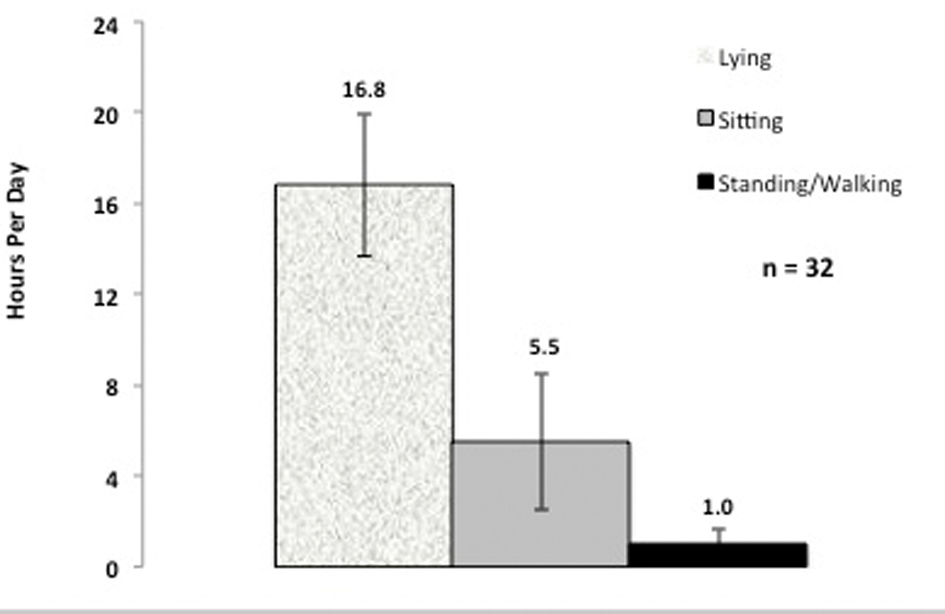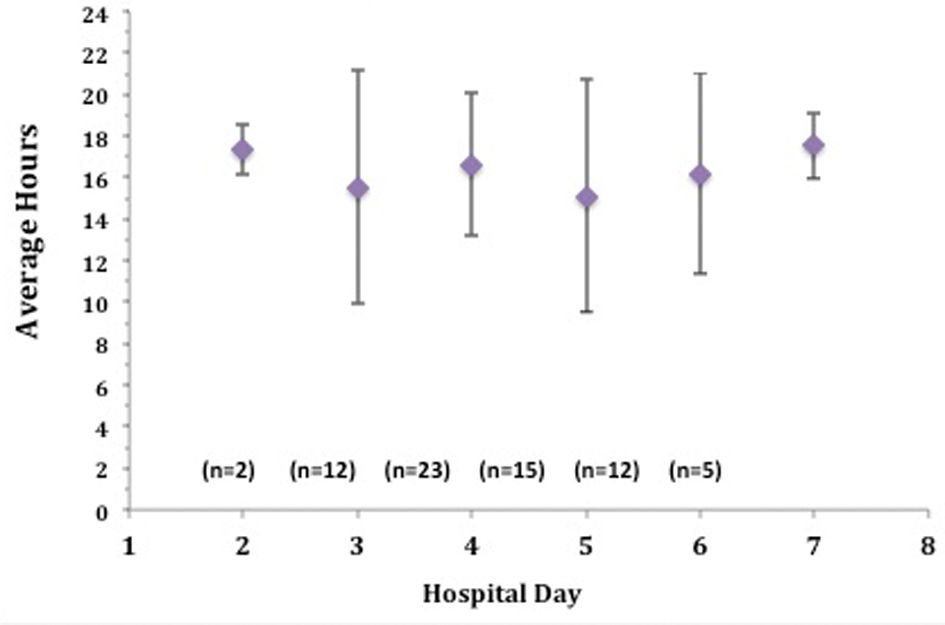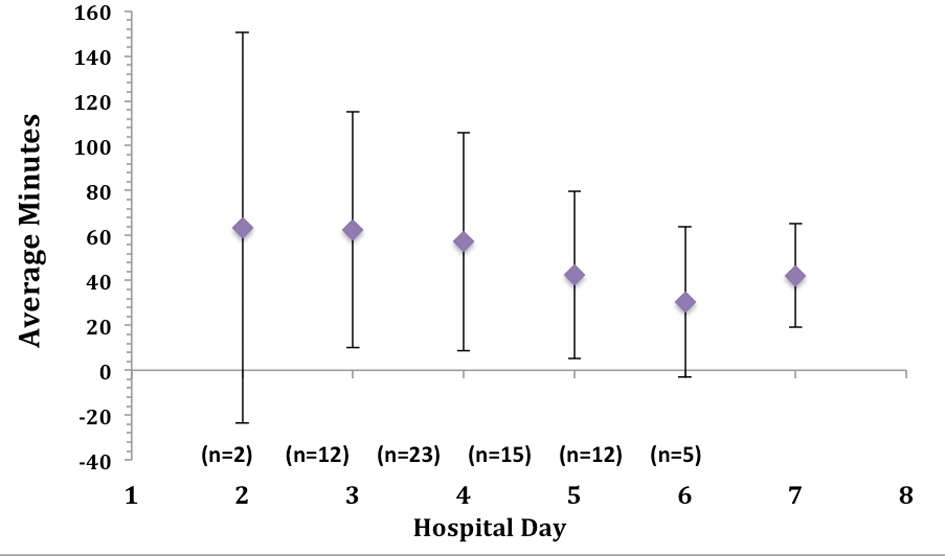
Figure 1. Average daily hours spent lying, sitting, and standing or walking.
| Cardiology Research, ISSN 1923-2829 print, 1923-2837 online, Open Access |
| Article copyright, the authors; Journal compilation copyright, Cardiol Res and Elmer Press Inc |
| Journal website https://www.cardiologyres.org |
Original Article
Volume 4, Number 1, February 2013, pages 15-25
Using Novel Technology to Determine Mobility Among Hospitalized Heart Failure Patients: A Pilot Study
Figures



Tables
| Study Start - Day 1 (Baseline Measures) | Study Days 2 - 4 (Check-in Visits) | Study End - Day 5 or day of discharge (Final Measures) |
|---|---|---|
| ADLs: Activities of Daily Living; NYHA: New York Heart Association; KPS: Karnofsky Performance Status Scale; SPPB: Short Physical Performance Battery. | ||
| Demographic: Age, gender, race, marital status; Clinical: Vital Signs, symptoms, Ejection Fraction; Functional: home exercise (self report), NYHA Class, Katz Index of ADLs, KPS, SPPB; Mobility: Accelerometer monitors on ankle and thigh. | Skin: Check skin condition under monitors; Mobility: Move accelerometer monitors to opposite ankle and thigh. | Clinical: Vital Signs, confirm receipt of PT in hospital; Functional: NYHA Class; Skin: Check skin condition under monitors; Mobility: Remove accelerometer monitors. |
| Characteristic | Value |
|---|---|
| ACEi: angiotensin converting enzyme inhibitor; ARB: angiotensin receptor blocker; LVAD: left ventricular assistive device. | |
| Age, mean years ± SD | 58 ± 13 |
| Male Gender, % (n) | 78.1 (25) |
| Race/Ethnicity % (n) | |
| Caucasian/White | 59.4 (19) |
| African-American/Black | 31.3 (10) |
| Asian/Pacific Islander | 9.4 (3) |
| History of smoking, % (n) | 75.0 (24) |
| History of hypertension, % (n) | 71.9 (23) |
| Creatinine on admission (g/dL), mean ± SD | 1.9 ± 1.7 |
| Etiology of Heart Failure, % (n) | |
| Ischemic | 28.1 (9) |
| Idiopathic | 65.6 (21) |
| Unknown/other | 6.3 (2) |
| Ejection Fraction < 40%, % (n) | 71.9 (23) |
| ACEi/ARB use - study end, % (n) | 62.5 (20) |
| Beta blocker use - study end, % (n) | 78.1 (25) |
| High-Risk Diagnoses for the Elderly Scale (study end), mean ± SD | |
| Low (0) = 9.5% chance dying in 1 year | 3.3 ± 1.7 |
| Intermediate (1 - 2) = 31% chance | |
| High risk (3 - 5) = 46% chance | |
| Very High Risk (> 6) = 74% chance | |
| Length of hospital stay, mean in days ± SD | 9.5 ± 9.9 |
| Physical Therapy - in hospital, % (n) | 34.4 (11) |
| LVAD received during study admission, % (n) | 6.3 (2) |
| Discharged with Physical Therapy, Occupational Therapy, or Home Health, % (n) | 40.6 (13) |
| Cardiac Events - 90 days post-discharge, % (n) | |
| Cardiac readmission | 34.4 (11) |
| Heart transplant | 3.1 (1) |
| Mortality | 9.4 (3) |
| Characteristic | Value | |
|---|---|---|
| ADLs: activities of daily living; NYHA: New York Heart Association Class; SD: standard deviation. | ||
| Short Physical Performance Battery (mean ± SD) (n = 31) | 6.4 ± 3.1 | |
| Accelerometer Mobility (mean minutes and hours ± SD, median minutes and hours) | Mean | Median |
| Standing or Walking | 59 ± 43 minutes | 45.8 minutes |
| Sitting | 5.5 ± 3.0 hours | 5.8 hours |
| Lying | 16.8 ± 3.2 hours | 16.6 hours |
| Home exercise % (n) | 62.5 (20) | |
| Katz Index of Independence in ADLs (mean ± SD) | 5.6 ± 1.1 | |
| NYHA Classification % (n) | Study Start | Study End |
| Class I | 6.3 (2) | 15.6 (5) |
| Class II | 18.8 (6) | 50.0 (16) |
| Class III | 56.3 (18) | 31.3 (10) |
| Class IV | 18.8 (6) | 3.1 (1) |
| Karnofsky Performance Status Scale | ||
| Mean ± SD (range) | 71.1 ± 9.0 (50 - 90) | |